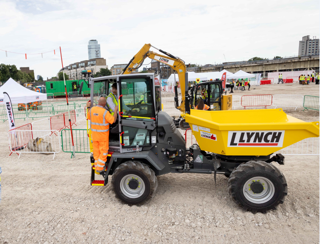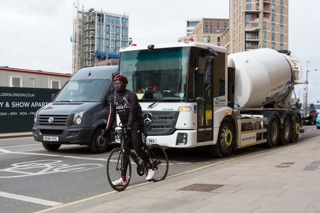Transport for London (TfL) has issued more than 8,000 Heavy Goods Vehicle (HGV) Safety Permits, as part of the Direct Vision Standard since it launched in October 2019.
The number of permits issued so far is encouraging, says TfL. However, it estimates that there are around 250,000 HGVs entering London each year that will need to apply for a permit by the October deadline.
Will Norman, London's Walking and Cycling Commissioner, said: “With more than 8,000 permits already issued, the initial response from freight businesses has been encouraging.
“But we urge more HGV owners to sign up to the scheme ahead of enforcement beginning to help us to eradicate all deaths from our roads.”
Freight operators are required to obtain the free permit to be compliant with the new standard before enforcement begins on October 26.
The Direct Vision Standard aims to minimise HGV blind spots. Based on how much a driver can see directly through their cab windows, a star rating system rates HGVs over 12 tonnes from zero (lowest) to five (highest).
HGVs will need to meet a minimum one-star rating by the time enforcement begins to enable them to operate in London or will need to fit Safe System measures to improve the vehicle’s safety.
Every HGV over 12 tonnes will require a permit and it is possible to apply for multiple vehicle permits in a single application. Almost 6,000 of the permits issued so far have been done through this process.
Operators are encouraged to apply for a free HGV Safety Permit now ahead of enforcement beginning on 26 October.
Operators with vehicles rated zero star will need to allow extra time to apply for their permit as Safe System measures, including cameras and sensors, need to be installed and evidenced for a permit to be issued.
HGV operators who fail to meet these new minimum safety standards and obtain a permit will be issued a penalty charge of £550 a day for driving in the capital.
More than 500 of the permits have been issued to lorries previously classed as the most dangerous on London’s roads, which have been required to make vital safety improvements in order to receive a Safety Permit to continue operating in London. These vehicles have the lowest levels of direct vision from the driver’s cab and are rated zero star, which is why safety advances were needed.
The Direct Vision Standard will operate 24 hours a day, seven days a week and will be enforced within the Greater London Boundary.
Christina Calderato, head of transport strategy and planning at TfL said: “It’s promising to see that so many operators have applied for permits and made their vehicles safer since our Safety Permit scheme went live three months ago, but we would strongly advise all operators who haven’t yet applied to do so now.
“It’s vital that everyone plays their role in this life-saving scheme, and I’d like to remind operators that those who fail to meet our standards will not be permitted to drive in the capital.”
More than six per cent of the 8,000 Safety Permits issued so far have been for zero-star vehicles. The remaining 94 per cent of permits – more than 7,500 vehicles – are rated between one and five star, meaning they are compliant with the Direct Vision Standard until new tighter measures are brought in in 2024.
The Direct Vision Standard is a key part of TfL's Vision Zero commitment to tackle the number of people being killed and seriously injured on London's roads.





















Login to comment
Comments
No comments have been made yet.